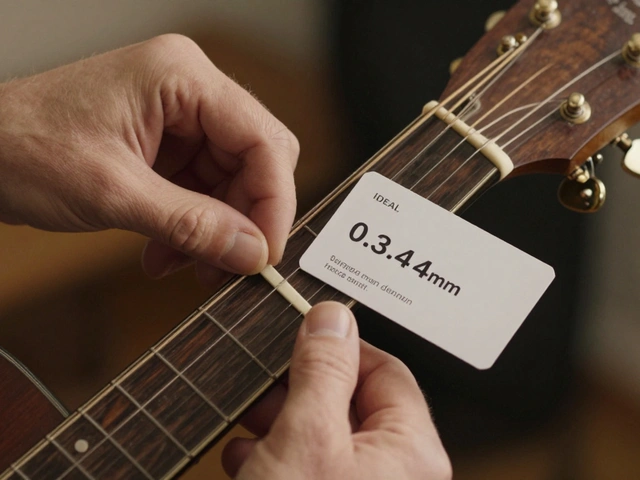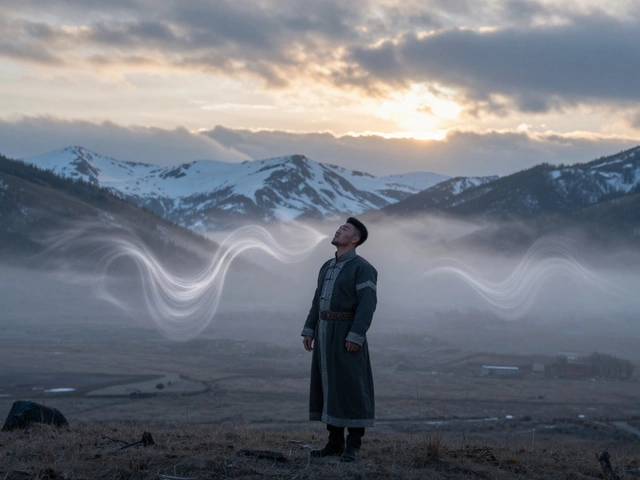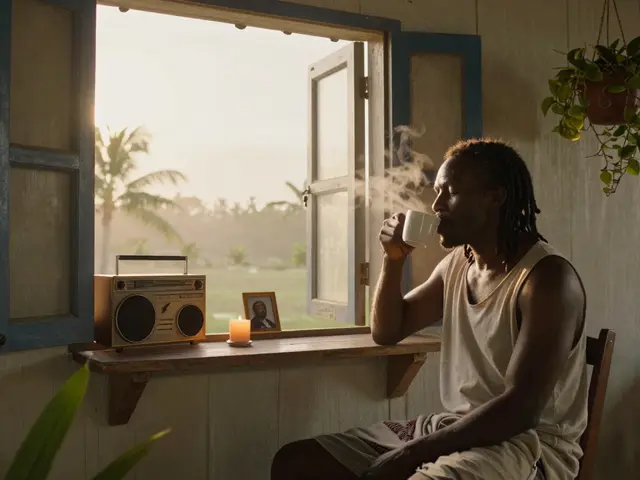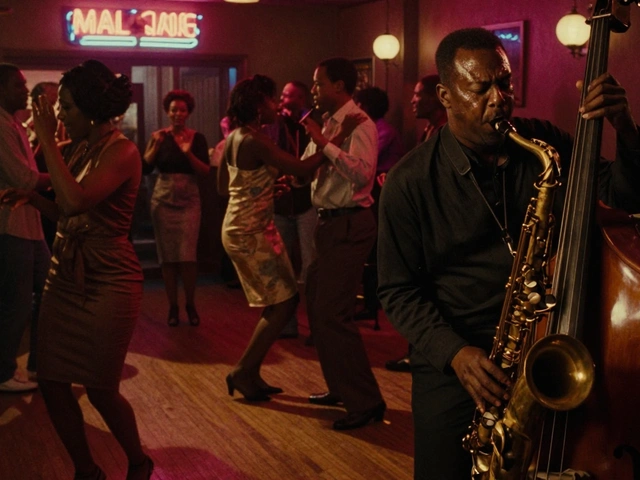If you stop and think about it, rhythm and blues didn’t just change music—they rewired the world’s heartbeat. Just when swing and big band ruled the airwaves, a bold, stirring sound crept out of smoky Southern juke joints. It would go on to inspire every genre from rock and roll to hip hop. But the magic? It’s all thanks to a wickedly talented group of R&B pioneers who never asked for permission and rarely got the credit they deserved.
The Birth of Rhythm and Blues: From the Back Streets to the Big Stage
Picture the 1940s in the U.S. Cities bursting at the seams—New Orleans, Chicago, Memphis—everybody chasing jobs and hope. African-American musicians, squeezed by segregation and poverty, started plugging electric guitars into battered amps and adding hot horns, gospel shout vocals, and the insistent grooves of the blues. ‘Race music,’ as the industry called it, was mostly ignored by the mainstream, but that didn’t stop people from filling Black nightclubs and barn dances to sweat out their troubles.
The real turning point came in 1949, when Billboard swapped the insulting ‘Race Records’ chart for the ‘Rhythm and Blues’ chart. It was more than a name change; it cracked the door for the music to reach bigger, more diverse crowds. Jump blues artists like Louis Jordan got folks dancing, and suddenly stars like Ruth Brown, Wynonie Harris, and Big Joe Turner proved that deep soul and raunchy energy could mix with pop hooks. Ruth Brown (the “Queen of R&B”) became so essential to Atlantic Records that the label was called ‘the house that Ruth built.’
Here’s a bit of context, since my son Callum always asks “how big was it?”: Atlantic Records alone sold millions of R&B records by 1953. R&B had become an 800-pound gorilla on American radio, shaping not only music but fashion, slang, and even dance crazes. Still, much of the mainstream press ignored its impact. The undeniable power of R&B was felt through the giggles of kids sneaking peeks at ‘forbidden’ records and teenagers dragging their parents onto the dance floor. It was alive and subversive, pulsing with stories of love, pain, pride, and fun that cut across every barrier built by Jim Crow laws.
Unforgettable Trailblazers: The Voices and Musicians Who Changed the Game
Some names are tattooed into the DNA of music. Take Ray Charles—he’s the one who took gospel’s fire and poured it over jazzy swing, inventing ‘soul’ as a sound and attitude. His 1954 single “I Got a Woman” wasn’t just catchy, it was revolutionary. Then there’s Sister Rosetta Tharpe, the godmother whose electric guitar riffs put most of her contemporaries to shame. She wasn’t just ahead of her time—she was from the future.
Don’t sleep on Little Richard, who brought wild energy, blurred gender norms, and a screaming piano that set teens alight in the 1950s. Even my daughter Beatrice, who claims she doesn’t even “like old music,” had to admit his songs still make you dance like you’ve got ants in your pants. Fats Domino’s smooth croon made “Blueberry Hill” a nationwide anthem. Meanwhile, Big Mama Thornton’s growl on “Hound Dog” was so raw and powerful that it made Elvis’s later version seem almost tame. She never got the riches or spotlight her male peers did, but other musicians knew the truth—she was a force of nature.
If you’re curious about the crossover, look at Sam Cooke. He started in gospel, turned full-on R&B star, and soon became a pop idol. His unique blend of heartfelt lyricism and smooth charm opened doors for an entire generation. Guys like Chuck Berry tuned into what made R&B tick—his storytelling guitar licks literally defined the sound of rock and roll. Meanwhile, Etta James proved balladry could gut-punch your soul, especially with tracks like “At Last.”
Sonic Alchemy: How R&B Changed the Rules of the Game
R&B wasn’t just new music—it was a new attitude. If you wanted your heart broken or your spirit lifted, R&B had you covered. It upended radio programming. Suddenly, disc jockeys like Alan Freed were airing R&B hits to integrated teen audiences in the 1950s. Sales went bonkers, and a 1956 survey showed that over 40% of American teenagers regularly listened to R&B records—even in homes where their parents disapproved.
Here’s a quick-glance table with some early R&B chart toppers and their impact (my kids love a good list):
| Artist | Year | Song | Notable Achievement |
|---|---|---|---|
| Ruth Brown | 1950 | Teardrops from My Eyes | #1 R&B Hit, redefined Atlantic Records |
| Ray Charles | 1954 | I Got a Woman | Pioneered Soul Music |
| Louis Jordan | 1946 | Choo Choo Ch’Boogie | Jump blues crossing into mainstream |
| Sister Rosetta Tharpe | 1944 | Strange Things Happening Every Day | First gospel R&B hit, trailblazing electric guitar |
| Big Mama Thornton | 1952 | Hound Dog | Later covered by Elvis to global fame |
It wasn’t all smooth sailing. Many R&B musicians faced fierce racism and exploitation. Big concerts were often segregated. Ruth Brown and Little Richard had their music ‘watered down’ when white artists covered their songs and scored bigger paydays. But here’s something wild: despite this, R&B stars kept creating, kept performing, and kept fighting for their place in the spotlight. Their records sound as urgent today as ever.
The Ripple Effect: Rhythm and Blues in Culture, Fashion, and Beyond
It’s crazy how many fingerprints R&B has left everywhere, not just on music. In the 1960s, Motown exploded by blending R&B with pop and gospel, producing chart monsters like Stevie Wonder and Marvin Gaye. Motown changed the way people dressed—sharp suits, slick hair, coordinated dance moves. That style seeped into everything from movie soundtracks to how high schoolers dressed for the prom.
And don’t forget the activism. Many early R&B pioneers backed the Civil Rights Movement with their fame, cash, and songs. Sam Cooke’s “A Change Is Gonna Come” became a quiet anthem for protesters. R&B’s focus on love, heartbreak, and dignity brought real stories of Black America into white living rooms, inching the country closer toward understanding. Surprisingly, music tech adapted too. Fender and Gibson guitars found new fans eager to replicate R&B’s bold sound. Cheap transistor radios helped teens sneak a listen at night, away from grownups who didn’t understand what all the fuss was about.
Young artists kept stretching the genre. Otis Redding and Aretha Franklin deepened the soul side. Wilson Pickett, James Brown, and Ike & Tina Turner cranked up the energy and laid the foundation for funk and disco. Even today, chart-toppers like Beyoncé and Bruno Mars drop nods to classic R&B in their beats, lines, and live shows.
All this, and R&B still morphs with each decade, soaking up influences and spitting something new back out. It never gets stale. If you want to know the pulse of a decade, check its R&B hits.
Essential Listening and Ways to Keep the Legacy Alive
If you want to go deep on R&B—and I’ve done this with my own kids by turning cleaning days into music history time—start with the essential albums. Here are a few must-listens:
- Ray Charles – “The Birth of Soul” (Atlantic, 1991 compilation)
- Ruth Brown – “Rock & Roll”
- Sister Rosetta Tharpe – “The Original Soul Sister”
- Fats Domino – “This Is Fats Domino!”
- Little Richard – “Here’s Little Richard”
- Big Mama Thornton – “With the Muddy Waters Blues Band”
- Etta James – “At Last!”
But don’t just stop at records. Support documentaries and museums shining a light on R&B’s history, like the Stax Museum in Memphis or the National Museum of African American Music in Nashville. If you play an instrument, try learning a classic riff—the 12-bar blues feels easier than you’d think, and will win you respect at any jam session.
Introduce kids (and yourself) to sampling projects. Dig into how modern R&B, pop, and hip hop borrow beats and melodies from the old masters. There’s a reason vintage records are like gold: they’re packed with usable hooks and pure emotion. Next time you’re at a barbecue, swap the radio for a R&B playlist and see if anyone can resist joining in when Sam Cooke or Aretha comes on.
Rhythm and blues isn’t just the sound of the past—it's the creative fuel that keeps music fresh, risky, and raw. The next time your favorite artist drops a soulful note, remember they’re echoing the pioneers who shook up the world and refused to play by anyone else’s rules. Rhythm and blues is freedom in a backbeat, and the legends who started it all still push us to be better, bolder, and more honest in every note we play and every step we dance.





